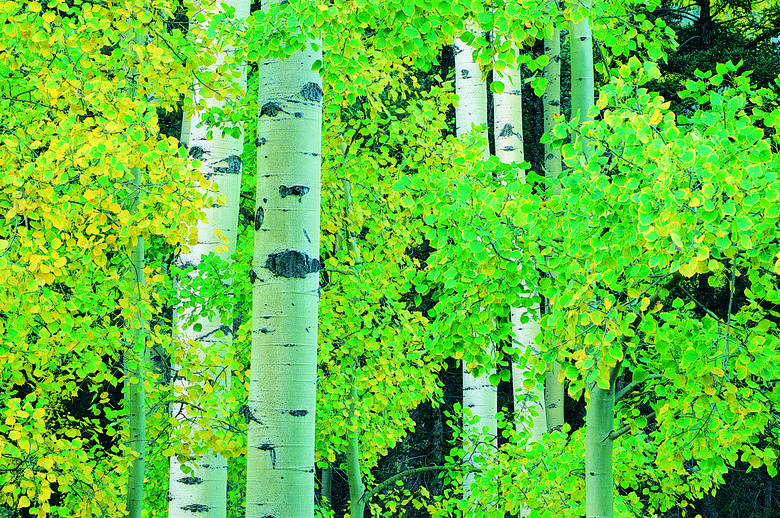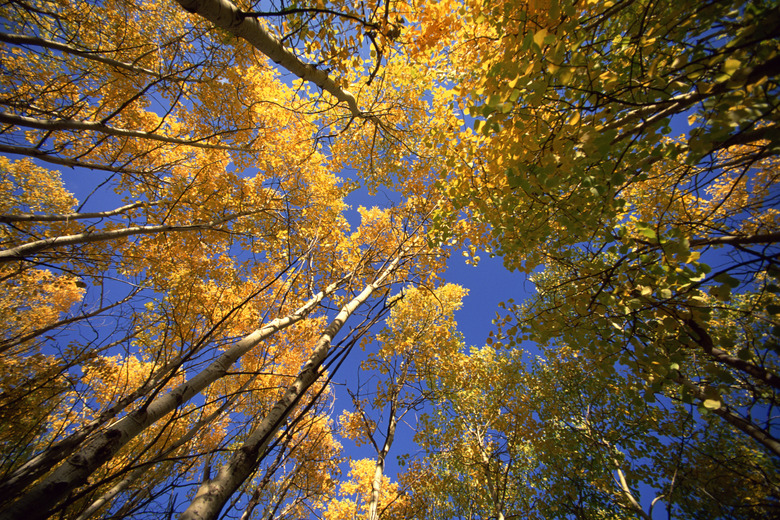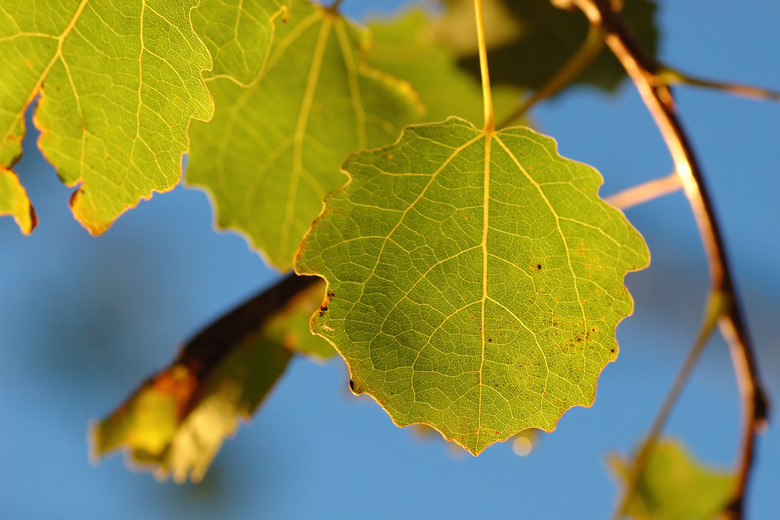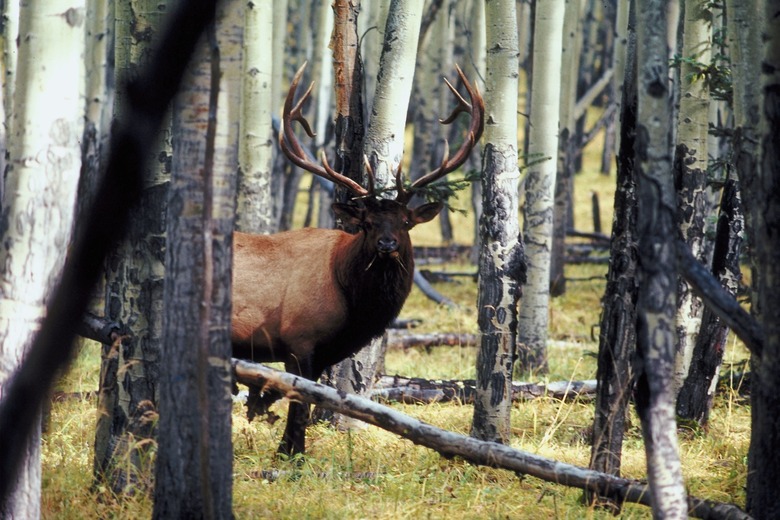Facts On Aspen Trees
The quaking aspen and the bigtooth aspen are members of the willow family of trees. They belong to the genus Populus, which includes aspens, poplars and cottonwoods. Aspen trees are sometimes referred to as aspen poplars. Both species of aspen trees enjoy a wide geographical range, especially the quaking aspen, which has the distinction of growing from coast to coast across North America. The quaking aspen is the tree with the biggest distribution on the continent and a close relative of the European aspen, which grows across Europe, Asia and parts of Africa. Aspens have large round leaves, grow straight and tall, and form large stands in many sections of the areas in which they grow.
Aspen Tree Geography
Aspen Tree Geography
Quaking aspens grow across Canada and into Alaska, with the tree absent only from the extreme northern portions of both. In the lower 48 states, quaking aspen grows throughout the Rocky Mountain states, the Great Lakes region and New England. Bigtooth aspen has a much smaller distribution, growing from Minnesota eastward to New England and southern parts of Canada. This variety of aspen tree grows as far south as parts of West Virginia and Pennsylvania.
The Unusual Aspen Leaf
The Unusual Aspen Leaf
The leaves of aspen trees have long stems and a rounded shape that, together with their size, makes them move in even a very light wind. Quaking aspen leaves are nearly round and as wide as 3 inches. Those of bigtooth aspen are longer at about 3 1/2 inches but not quite as wide, with most between 2 and 2 1/2 inches across. Both kinds have edges with rounded teeth on them, with bigtooth aspen's teeth farther apart than those on the quaking aspen. The leaves turn yellowish gold in the fall, creating striking scenery where large stands of the trees grow.
Aspen Bark
Aspen Bark
While the bark on the largest specimens of quaking aspen will become rough and furrowed, with a gray shade to it, most develop a whitish-green bark. The bark is thin and contains multiple black bumpy patches. Bigtooth aspen bark is smooth and a gray-white on the immature trees, crisscrossed with black bands. The bark turns a darker hue of gray at the bottom portion of the trunk, with deep furrows, on the older bigtooth aspens.
Aspen Poplar Branching Pattern
Aspen Poplar Branching Pattern
The quaking aspen tree is a pioneer species that can quickly colonize areas recently cleared areas. The trees develop root suckers which emerge from the soil around the base of the trunk. These suckers can grow into new trees, forming a stand of closely growing aspens. As a result, the aspen poplar branching pattern creates tall, narrow trees with pyramid-shaped crowns that can grow in proximity within a colony of aspens.
Aspen Poplar Facts: Landscaping
Aspen Poplar Facts: Landscaping
Aspen trees available in nurseries as landscaping ornamentals typically come from their natural settings, but little of the aspen root system is intact. The aspen normally will not live long, only about 25 years, when planted for landscaping purposes. The tree has two major requirements, according to the Ohio Department of Natural Resources. One is to be in well-drained soil, so the ground around the tree is not constantly moist. The other is to be in a cool climate where the summer temperatures are not too severe.
Significance to Wildlife
Significance to Wildlife
One interesting aspen poplar fact is their importance to beavers. Both kinds of aspens are a principal food of beavers throughout their range. The mammals will eat the bark, leaves and the twigs of these trees, and use the branches to construct dams. Other mammals that depend on the aspen tree for food include deer, moose and elk, which browse the leaves and twigs. Rabbits and muskrats will eat the bark, and birds such as the ruffed grouse will consume the seeds and the flower buds. The yellow-bellied sapsucker and the hairy woodpecker frequently hollow out parts of the tree to create a nesting cavity.
Cite This Article
MLA
Lindell, John. "Facts On Aspen Trees" sciencing.com, https://www.sciencing.com/aspen-trees-6120998/. 12 October 2018.
APA
Lindell, John. (2018, October 12). Facts On Aspen Trees. sciencing.com. Retrieved from https://www.sciencing.com/aspen-trees-6120998/
Chicago
Lindell, John. Facts On Aspen Trees last modified March 24, 2022. https://www.sciencing.com/aspen-trees-6120998/



